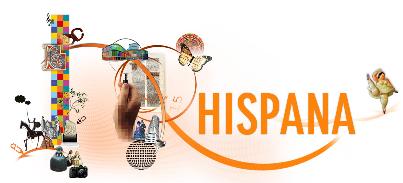Mostrar el registro sencillo del ítem
A Comparison of Burned Area Time Series in the Alaskan Boreal Forests from Different Remote Sensing Products
| dc.contributor.author | Moreno Ruiz, José Andrés | |
| dc.contributor.author | García Lázaro, José Rafael | |
| dc.contributor.author | Arbelo, Manuel | |
| dc.contributor.author | Riaño Arribas, David | |
| dc.date.accessioned | 2020-01-20T09:25:17Z | |
| dc.date.available | 2020-01-20T09:25:17Z | |
| dc.date.issued | 2019-04-26 | |
| dc.identifier.issn | 1999-4907 | |
| dc.identifier.uri | http://hdl.handle.net/10835/7621 | |
| dc.description.abstract | Alaska’s boreal region stores large amounts of carbon both in its woodlands and in the grounds that sustain them. Any alteration to the fire system that has naturally regulated the region’s ecology for centuries poses a concern regarding global climate change. Satellite-based remote sensors are key to analyzing those spatial and temporal patterns of fire occurrence. This paper compiles four burned area (BA) time series based on remote sensing imagery for the Alaska region between 1982–2015: Burned Areas Boundaries Dataset-Monitoring Trends in Burn Severity (BABD-MTBS) derived from Landsat sensors, Fire Climate Change Initiative (Fire_CCI) (2001–2015) and Moderate-Resolution Imaging Spectroradiometer (MODIS) Direct Broadcast Monthly Burned Area Product (MCD64A1) (2000–2015) with MODIS data, and Burned Area-Long-Term Data Record (BA-LTDR) using Advanced Very High Resolution Radiometer LTDR (AVHRR-LTDR) dataset. All products were analyzed and compared against one another, and their accuracy was assessed through reference data obtained by the Alaskan Fire Service (AFS). The BABD-MTBS product, with the highest spatial resolution (30 m), shows the best overall estimation of BA (81%), however, for the years before 2000 (pre-MODIS era), the BA sensed by this product was only 44.3%, against the 55.5% obtained by the BA-LTDR product with a lower spatial resolution (5 km). In contrast, for the MODIS era (after 2000), BABD-MTBS virtually matches the reference data (98.5%), while the other three time series showed similar results of around 60%. Based on the theoretical limits of their corresponding Pareto boundaries, the lower resolution BA products could be improved, although those based on MODIS data are currently limited by the algorithm’s reliance on the active fire MODIS product, with a 1 km nominal spatial resolution. The large inter-annual variation found in the commission and omission errors in this study suggests that for a fair assessment of the accuracy of any BA product, all available reference data for space and time should be considered and should not be carried out by selective sampling. | es_ES |
| dc.language.iso | en | es_ES |
| dc.publisher | MDPI | es_ES |
| dc.rights | Attribution-NonCommercial-NoDerivatives 4.0 Internacional | * |
| dc.rights.uri | http://creativecommons.org/licenses/by-nc-nd/4.0/ | * |
| dc.subject | burned area mapping | es_ES |
| dc.subject | time series analysis | es_ES |
| dc.subject | Alaska | es_ES |
| dc.subject | boreal forest | es_ES |
| dc.subject | BABD-MTBS | es_ES |
| dc.subject | Fire_CCI | es_ES |
| dc.subject | MCD64A1 | es_ES |
| dc.subject | LTDR | es_ES |
| dc.title | A Comparison of Burned Area Time Series in the Alaskan Boreal Forests from Different Remote Sensing Products | es_ES |
| dc.type | info:eu-repo/semantics/article | es_ES |
| dc.relation.publisherversion | https://www.mdpi.com/1999-4907/10/5/363 | es_ES |
| dc.rights.accessRights | info:eu-repo/semantics/openAccess | es_ES |










